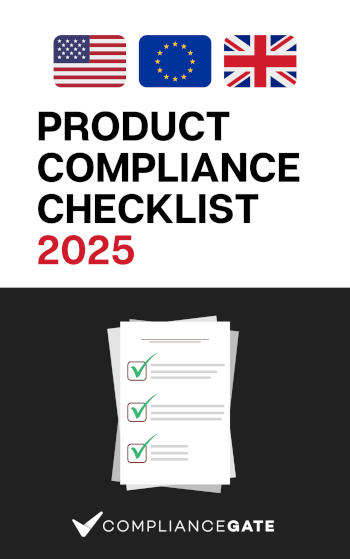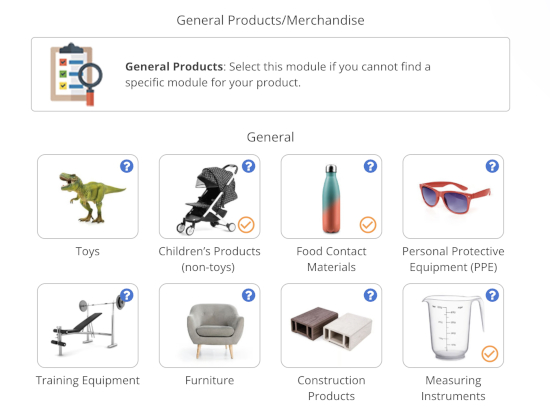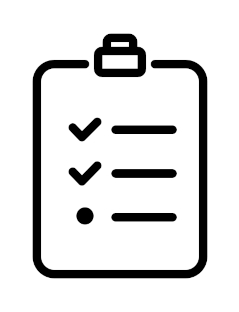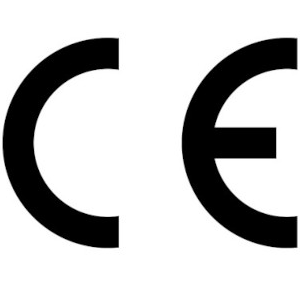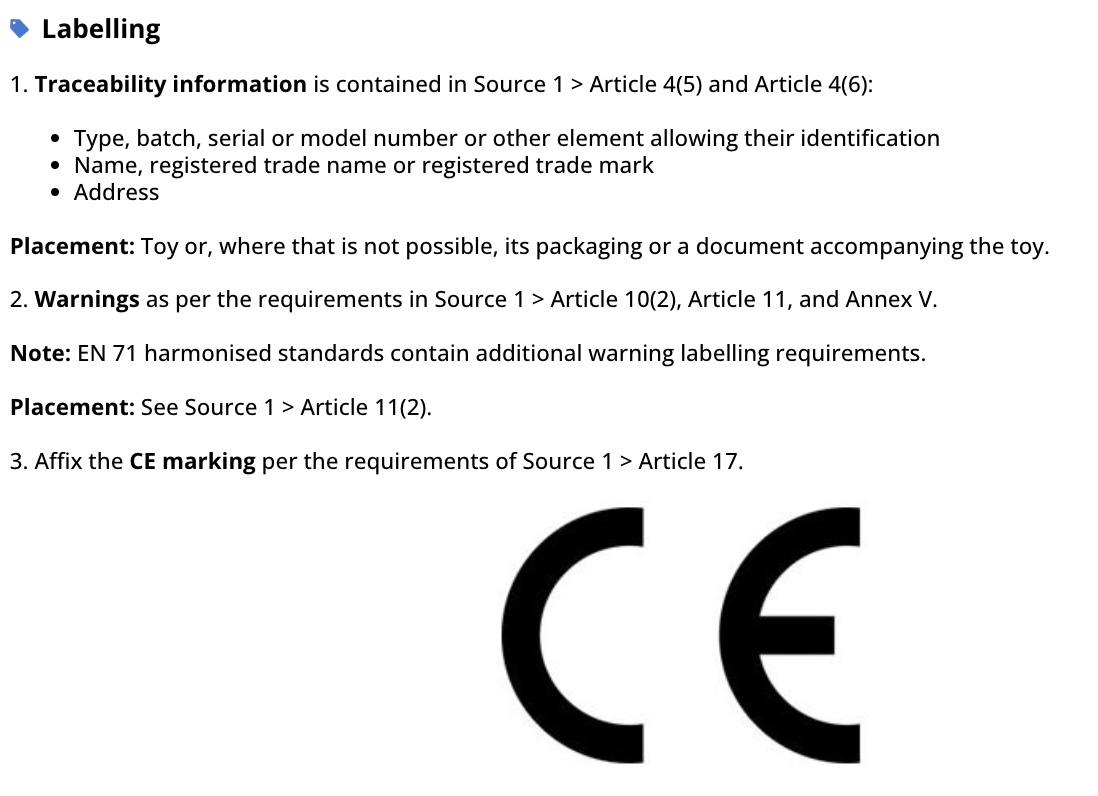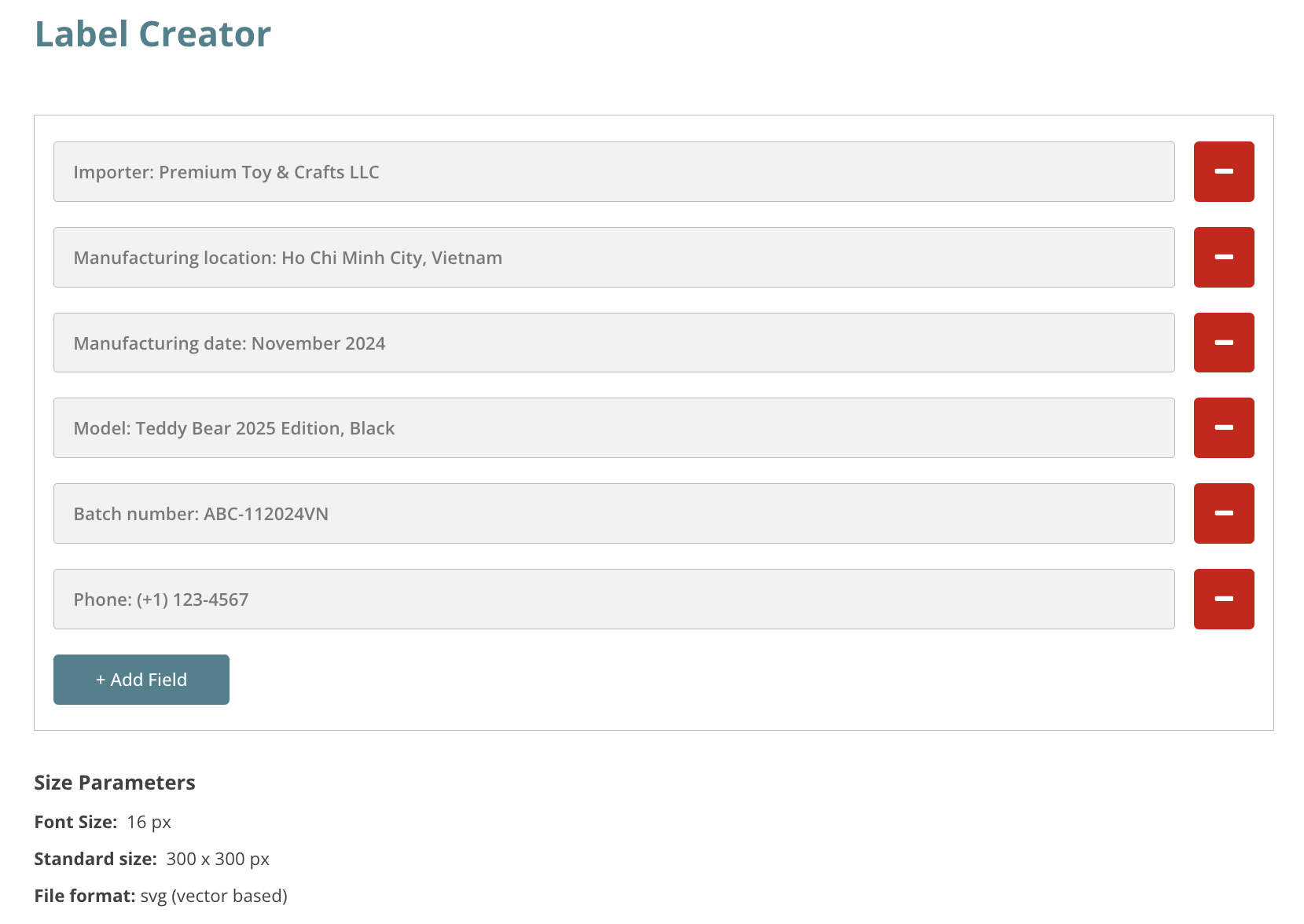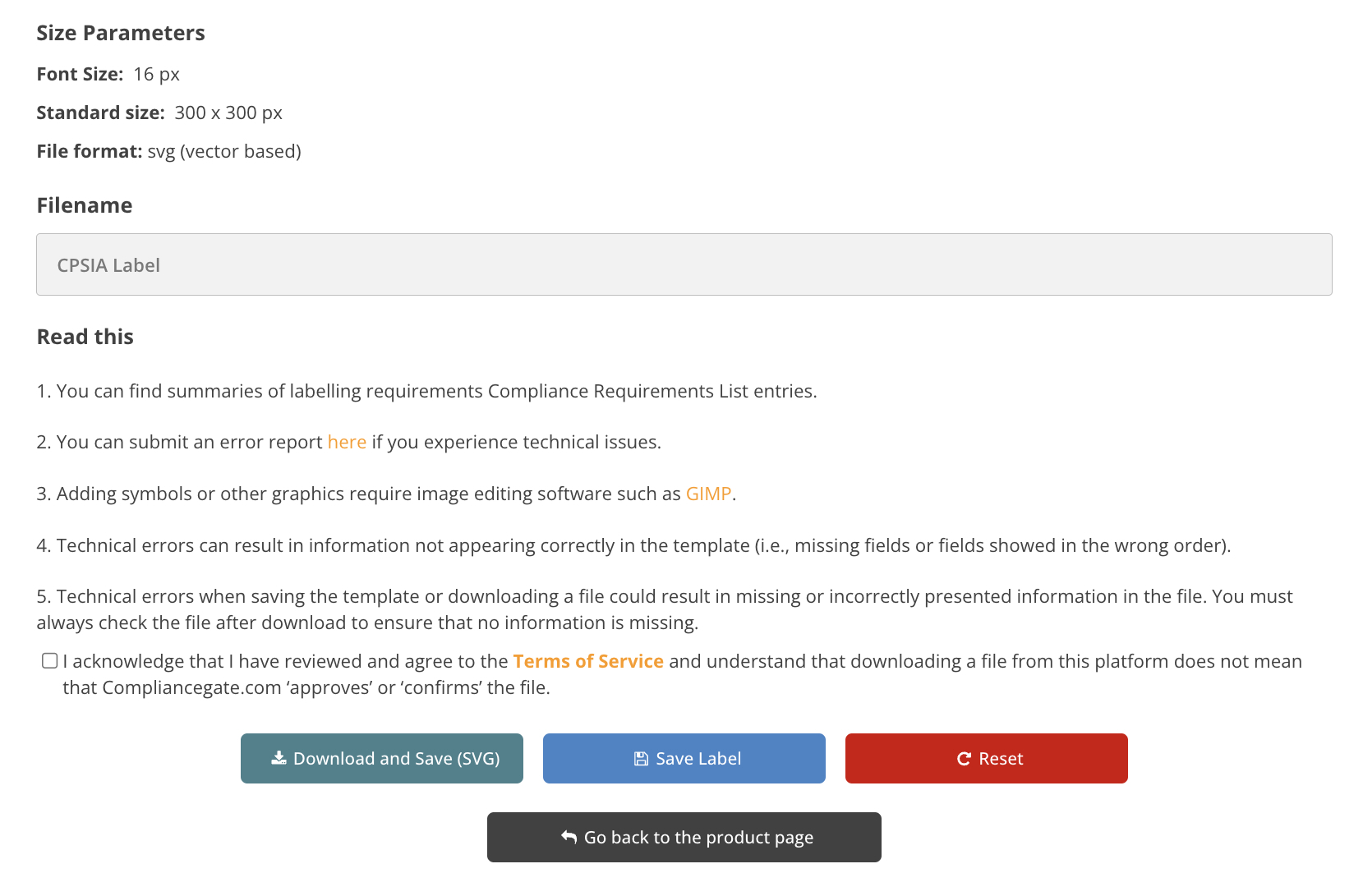Label Creator
Why do I need to create label files?
Essentially all consumer products are subject to mandatory product and packaging labelling requirements. Our platform makes it possible to find requirements and create label files.
You must first create a Compliance Requirements List to find information and sources
about relevant labelling requirements.
Label information and source references to label information can be found in
Compliance Requirements List entries.
Step 3: Download Label File
![]()
The downloaded file can be applied to the product, packaging, or accompanying documents. The file can also
be further edited in Photoshop, Illustrator, GIMP, or other image editing software.
.png)
US Examples
Here are some examples of US labelling requirements covered to some extent by the platform.
Consumer Product Safety Improvement Act (CPSIA)
Relevant for children’s products covered by the CPSIA
16 CFR Part 300, Part 301, Part 303 – Textile, Wool and Fur Acts and Rules
Relevant for apparel and other textile products
19 CFR Part 134 – Country of Origin Marking
Required for most products sold in the United States
Uniform Packaging and Labeling Regulation (UPLR)
Relevant for the packaging of many products
Fair Packaging and Labeling Act (FPLA)
Relevant for the packaging of many products
Uniform Law Label
Relevant for many products that contain filling material
California Proposition 65
Relevant for most consumer products sold in California
Bag Suffocation Warning
Relevant for many products packaged in plastic bags
Labeling of Hazardous Art Materials Act
Relevant for art materials
47 CFR Part 15 – Radio Frequency Devices
Relevant for most electronics
.png)
EU Examples
Here are some examples of EU labelling requirements covered to some extent by the platform
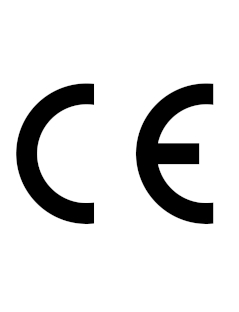
CE marking and traceability
The platform covers various regulations and directives that require CE marking
General Product Safety Regulation (GPSR)
Covers general labelling requirements for consumer products in the EU
Textile Labelling and Fibre Composition Regulation
Relevant for apparel and other textile products
EU Food Contact Materials Framework Regulation
Required for most food contact material articles
.png)
UK Examples
Here are some examples of UK labelling requirements covered to some extent by the platform
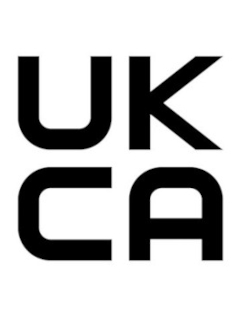
UKCA marking and traceability
The platform covers various regulations that require UKCA marking
The General Product Safety Regulations 2005
Covers general labelling requirements for consumer products in the UK
Textile Labelling and Fibre Composition Regulation
Relevant for apparel and other textile products
Risk Disclosure
The Risk Disclosure document explains the features of the Compliance Gate Platform, and their limitations and risks.
What is the Label Creator?
The label creator is an editor where you can insert labelling information. You can then download a label as a .svg file.
Where can we find labelling requirements?
You can find information about labelling requirements in Compliance Requirements List summaries and the linked sources.
How should we use the Label Creator?
Here are the steps you need to take:
Step 1: Create a Compliance Requirements List and check the latest source version.
Step 2: Add label information to the label creator
Step 3: Download the file as an .svg
Do you provide warning texts and symbols?
The labelling requirements sections in Compliance Requirements List summaries are only based on publicly available information in regulations and directives. These sometimes contain warnings.
However, warning texts and symbols are sometimes part of product standards, which we do not have access to. For example, we cannot include warning symbols and texts from ASTM F963 or EN 71.
Further, many regulations set warning requirements without providing the exact wording. We do not provide interpretations or suggestions for how to write specific warnings in the label creator.
How do we add symbols and other graphical elements?
Currently, the label creator does not enable the inclusion of graphical elements, such as compliance marks, pictograms, or symbols. If you need to include graphical elements, then you must use an image editing software, such as GIMP or Adobe Illustrator.
Why do I need to create label files?
Product and packaging labelling is mandatory for essentially all consumer products sold in the US, EU and UK. Some labelling requirements apply to all products, while others only apply to certain product types of age groups.
At what stage should I create label files?
You need to ensure that your products and the packaging are correctly labelled at the time of manufacturing. Keep in mind that most labels must be permanently affixed – not attached in the form of a sticker that can be easily removed.
You must therefore create all relevant label files before your products enter production.
How do I know if my label is correct?
You can request a label review from several third-parties from within the platform. As such, you can have your label files reviewed by a third-party such as TUV Rheinland or QIMA before printing these.
This can help you reduce the risk of printing incorrect labels on your product and packaging, which can be expensive to correct afterwards.
Note that the terms of service of your selected third-party applies.
How can I request a label review?
You can request a label review and upload your label files using the product testing form, or the dedicated label review form.
What am I supposed to do with the label files I create?
You must submit all label files to the manufacturer of the product. Before that, we recommend that you request a label review.
How do you keep the label creator up to date?
The label creator is only a fillable form. It does not contain any information and it is not a label template.
You need to insert label information based on the summaries in the Compliance Requirements List, and the linked sources.
You may also need to enter label information from other resources for compliance requirements not covered by the Compliance Gate Platform.
What can happen if my products are not correctly labeled?
Products that are not correctly labeled can be subject to recalls, or removed from marketplaces such as Amazon. As such, we recommend that you book a label review before affixing label information on the product, packaging, or documentation during production.


